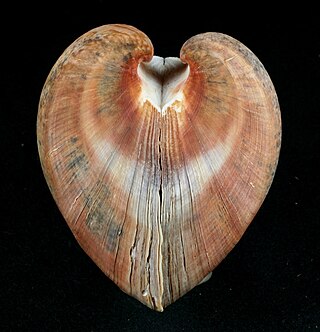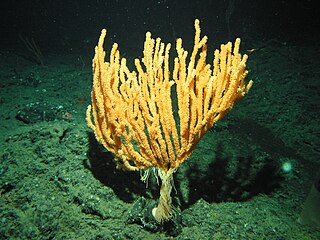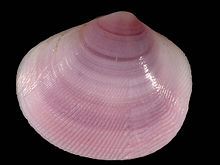
The Global Biodiversity Information Facility (GBIF) is an international organisation that focuses on making scientific data on biodiversity available via the Internet using web services. The data are provided by many institutions from around the world; GBIF's information architecture makes these data accessible and searchable through a single portal. Data available through the GBIF portal are primarily distribution data on plants, animals, fungi, and microbes for the world, and scientific names data.

Saccharomycetales belongs to the kingdom of Fungi and the division Ascomycota. It is the only order in the class Saccharomycetes. There are currently 13 families recognized as belonging to Saccharomycetales. GBIF also includes; Alloascoideaceae, Eremotheciaceae (16) Trigonopsidaceae and Wickerhamomycetaceae.

Epomophorus is a genus of bat in the family Pteropodidae. They have a distribution throughout Africa.

The false ark shells (Cucullaea) are a small genus of marine bivalve molluscs related to the ark clams. The genus is the only member of the family Cucullaeidae.

Capitosaurus is an extinct genus of temnospondyl amphibians whose remains have been found in Spitsbergen and Germany. Its skull was 30 cm long, with a total length over 122 cm. Several species have been assigned to the genus over the years, but only C. polaris is still valid today.
Batrachosuchoides is an extinct genus of prehistoric amphibian from the Early Triassic of Russia. It was found in the Baskunchakskaia Series and the Lestanshorskaya Svita.
Batrachosaurus is an extinct genus of prehistoric brachyopoid amphibian that lived in Germany during the Middle Triassic (Ladinian). The genus was named by Joseph Fitzinger in 1837 and the type species, B. jaegeri, was named three years later in 1840. It may have been the same animal as Mastodonsaurus.
Prothoosuchus is an extinct genus of trematosaurian temnospondyl within the family Thoosuchidae.

Bamboo coral, family Isididae, is a family of mostly deep-sea coral of the phylum Cnidaria. It is a commonly recognized inhabitant of the deep sea, due to the clearly articulated skeletons of the species. Deep water coral species such as this are especially affected by the practice of bottom trawling. These organisms may be an important environmental indicator in the study of long term climate change, as some specimens of bamboo coral have been discovered that are 4,000 years old.

Van Sung's shrew, also known as Cao Van Sung mountain shrew is a species of shrew in the Soricomorpha order. Specimens of Chodsigoa caovansunga have been found in Vietnam.

The Pottiaceae are a family of mosses. They form the most numerous moss family known, containing nearly 1500 species or more than 10% of the 10,000 to 15,000 moss species known.
Rhadalognathus was a prehistoric crocodile-like amphibian that belongs to the Mastodonsauridae family. Not much is known about this creature but it lived in the Triassic period. Rhadalognathus is also the name of the genus in which the organism belongs within. Rhadalognathus was found in northern Arizona, US, by S. P. Welles in 1947. The size of the organism is unknown but its skull is about 17in long and weighs 7lbs.
Compsosaurus is an extinct genus of phytosaur, a crocodile-like reptile that lived during the Triassic. Its fossils have been found in North Carolina. The type species, Compsosaurus priscus, was named by American paleontologist Joseph Leidy in 1856, although other sources say 1857. Compsosaurus may have been the same animal as the related Belodon.

Baena is an extinct genus of baenid turtles.
Xhosacetus is a genus of ziphiid cetaceans with a single species, Xhosacetus hendeysi. It was classified from fossils found off the coast of the Kerguelen islands in 1,145 meter deep water.

Amanita mairei is a species of fungus belonging to the family Amanitaceae.

Amanita submembranacea is a species of fungus belonging to the family Amanitaceae.
Neminidae is a family of flies belonging to the order Diptera.
Neogosseidae is a family of worms belonging to the order Chaetonotida.











